Nestled in the heart of Central Europe, the Czech Republic is a country of remarkable beauty, rich history, and vibrant culture. Renowned for its medieval towns, stunning landscapes, and world-famous beer, this small yet enchanting nation offers a treasure trove of experiences for travelers and history enthusiasts alike. With its capital, Prague, often dubbed the “City of a Hundred Spires,” the Czech Republic is a land where ancient traditions and modern innovations blend seamlessly.
Table of Contents
Geography
The Czech Republic is a landlocked country situated in Central Europe, bordered by Germany to the west, Austria to the south, Slovakia to the east, and Poland to the northeast. Covering an area of approximately 78,866 square kilometers, it is a nation of diverse landscapes, including rolling hills, fertile plains, and dense forests. The country’s geography is characterized by the Bohemian Massif, a large mountain range that encompasses much of its territory. The Vltava River, the longest river in the country, flows through the heart of Prague, adding to the city’s scenic charm.
States of Czech Republic
The Czech Republic is divided into 14 administrative regions, known as “kraj” in Czech. Each region is governed by a regional council and is further subdivided into districts. The regions are as follows:
| No. | Kraj |
|---|---|
| 1 | Prague (Praha) |
| 2 | Central Bohemian Region (Středočeský kraj) |
| 3 | South Bohemian Region (Jihočeský kraj) |
| 4 | Plzeň Region (Plzeňský kraj) |
| 5 | Karlovy Vary Region (Karlovarský kraj) |
| 6 | Ústí nad Labem Region (Ústecký kraj) |
| 7 | Liberec Region (Liberecký kraj) |
| 8 | Hradec Králové Region (Královéhradecký kraj) |
| 9 | Pardubice Region (Pardubický kraj) |
| 10 | Vysočina Region (Kraj Vysočina) |
| 11 | South Moravian Region (Jihomoravský kraj) |
| 12 | Olomouc Region (Olomoucký kraj) |
| 13 | Zlín Region (Zlínský kraj) |
| 14 | Moravian-Silesian Region (Moravskoslezský kraj) |
Historical Background
The Czech Republic’s history is as rich and varied as its landscapes. The region has been inhabited since the Paleolithic era, with numerous archaeological sites attesting to its ancient past. The Celts were among the first known inhabitants, followed by Germanic tribes and the Slavs. The foundation of the Czech state can be traced back to the 9th century when the Přemyslid dynasty established the Duchy of Bohemia.
One of the most significant periods in Czech history was the reign of Charles IV in the 14th century. As the King of Bohemia and Holy Roman Emperor, Charles IV transformed Prague into a cultural and intellectual hub of Europe. The construction of iconic landmarks such as Charles Bridge and St. Vitus Cathedral during his reign left an indelible mark on the city’s skyline.
The 20th century brought both triumph and turmoil to the Czech Republic. After gaining independence from the Austro-Hungarian Empire in 1918, Czechoslovakia emerged as a new nation. However, the country faced occupation by Nazi Germany during World War II and later fell under Soviet influence during the Cold War. The peaceful Velvet Revolution in 1989 led to the end of Communist rule, and in 1993, Czechoslovakia peacefully split into the Czech Republic and Slovakia.
Prague: The Jewel of Central Europe
No visit to the Czech Republic is complete without exploring its captivating capital, Prague. Known for its stunning architecture, historic sites, and vibrant cultural scene, Prague is a city that effortlessly combines the old and the new.
One of Prague’s most iconic landmarks is the Charles Bridge, a medieval stone bridge adorned with statues of saints. Spanning the Vltava River, it offers breathtaking views of the city’s skyline and serves as a bustling thoroughfare for pedestrians and street performers. The bridge connects the Old Town with the Lesser Town, both of which are home to numerous historical sites.
The Old Town Square is the heart of Prague’s historic district. Here, visitors can marvel at the Astronomical Clock, a medieval clock dating back to the 15th century. Every hour, a procession of apostles and other figures emerges from the clock, delighting onlookers with its intricate mechanics. The square is also surrounded by stunning Gothic, Baroque, and Renaissance buildings, including the Church of Our Lady before Týn.
Prague Castle, the largest ancient castle complex in the world, is another must-visit attraction. Perched on a hill overlooking the city, the castle has been the seat of Czech kings, emperors, and presidents for over a thousand years. Within its walls, visitors can explore St. Vitus Cathedral, the Old Royal Palace, and the stunning gardens that offer panoramic views of Prague.
Top Ten Must-Visit Destinations in the Czech Republic
The Czech Republic is a treasure trove of enchanting destinations, from medieval castles to breathtaking natural wonders. While cities like Prague are undeniably captivating, the country boasts a myriad of other spectacular sites that are equally deserving of attention. Here are ten must-visit destinations that showcase the Czech Republic‘s rich heritage and natural beauty.
1. Český Krumlov Castle
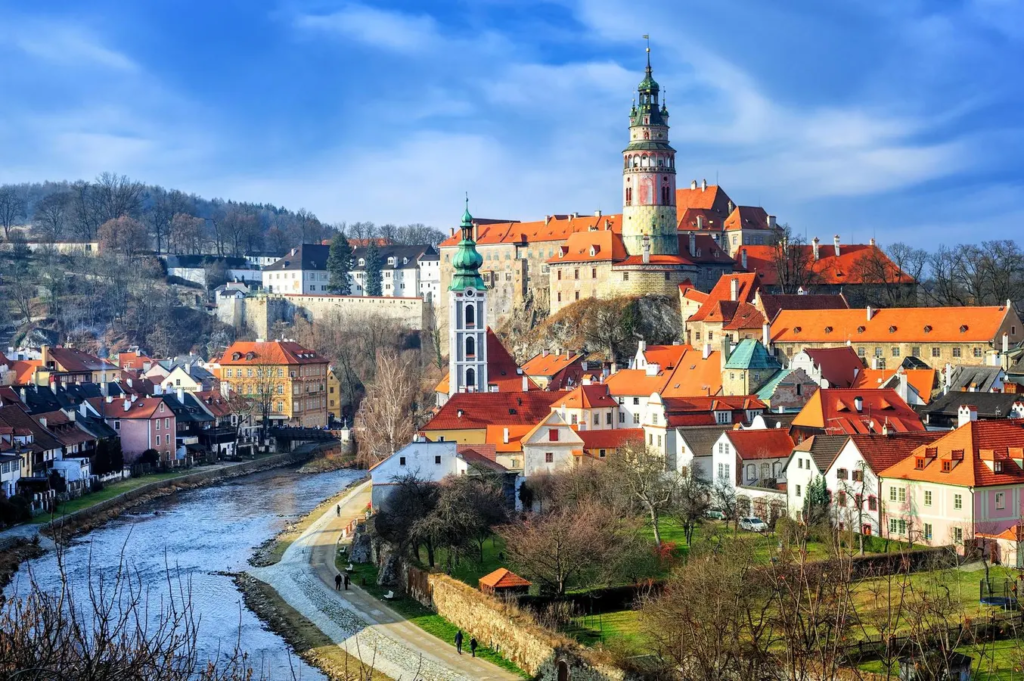
Dominating the town of Český Krumlov, this majestic castle is a UNESCO World Heritage site. The castle complex includes stunning Renaissance and Baroque buildings, ornate gardens, and a preserved Baroque theater. Visitors can explore the castle’s opulent interiors, take in panoramic views from the castle tower, and stroll through the charming streets of Český Krumlov, which are lined with colorful, historic houses.
2. Karlštejn Castle
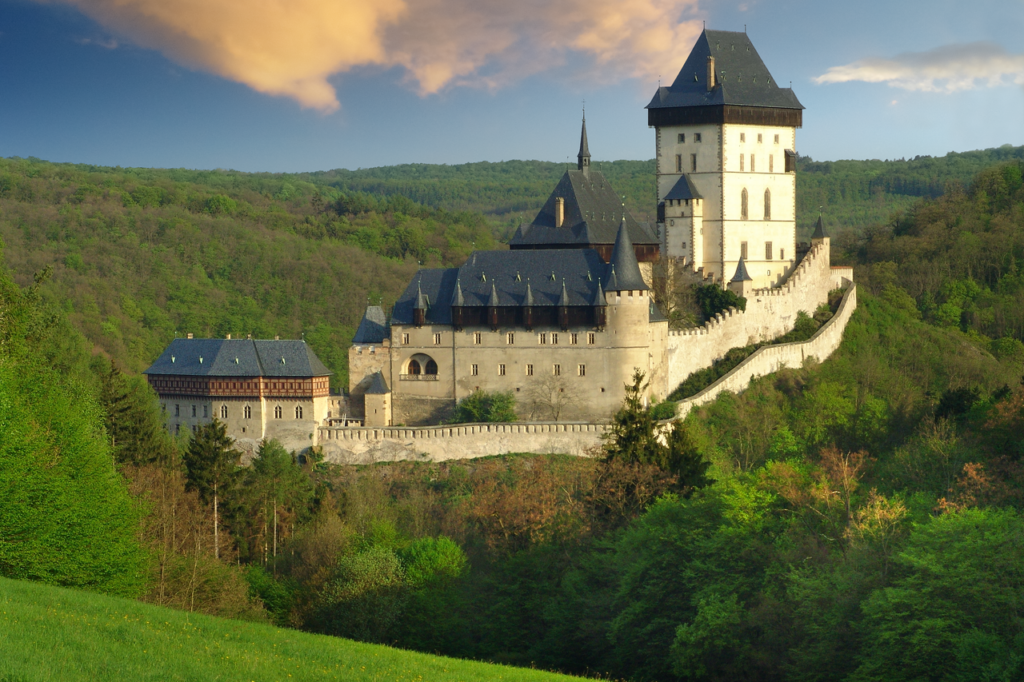
Perched on a hill overlooking the Berounka River, Karlštejn Castle is one of the Czech Republic’s most iconic medieval castles. Built in the 14th century by Emperor Charles IV, it served as a royal treasury and housed the crown jewels. The castle’s Gothic architecture and beautifully decorated interiors, including the Chapel of the Holy Cross, make it a captivating destination for history enthusiasts and architecture lovers.
3. Sedlec Ossuary (Bone Church)

Located in the town of Kutná Hora, the Sedlec Ossuary is a small chapel adorned with the bones of over 40,000 people. This macabre yet fascinating site is renowned for its eerie chandeliers, garlands, and sculptures crafted from human bones. The ossuary is a powerful reminder of mortality and a unique example of artistic expression using human remains.
4. Hluboká Castle

Hluboká Castle, often referred to as the Czech Republic’s version of Windsor Castle, is a stunning example of Neo-Gothic architecture. Surrounded by beautiful gardens and located near the town of České Budějovice, the castle’s lavish interiors feature ornate woodwork, fine tapestries, and a remarkable collection of art. The castle grounds also offer picturesque walking paths and serene views of the surrounding countryside.
5. Bohemian Switzerland National Park

Bohemian Switzerland National Park, located in the northwestern part of the country, is a natural wonderland of sandstone cliffs, deep gorges, and dense forests. The park is home to the famous Pravčická Brána, the largest natural sandstone arch in Europe. Visitors can explore numerous hiking trails, enjoy scenic boat rides on the Kamenice River, and marvel at the park’s diverse flora and fauna.
6. Adršpach-Teplice Rocks
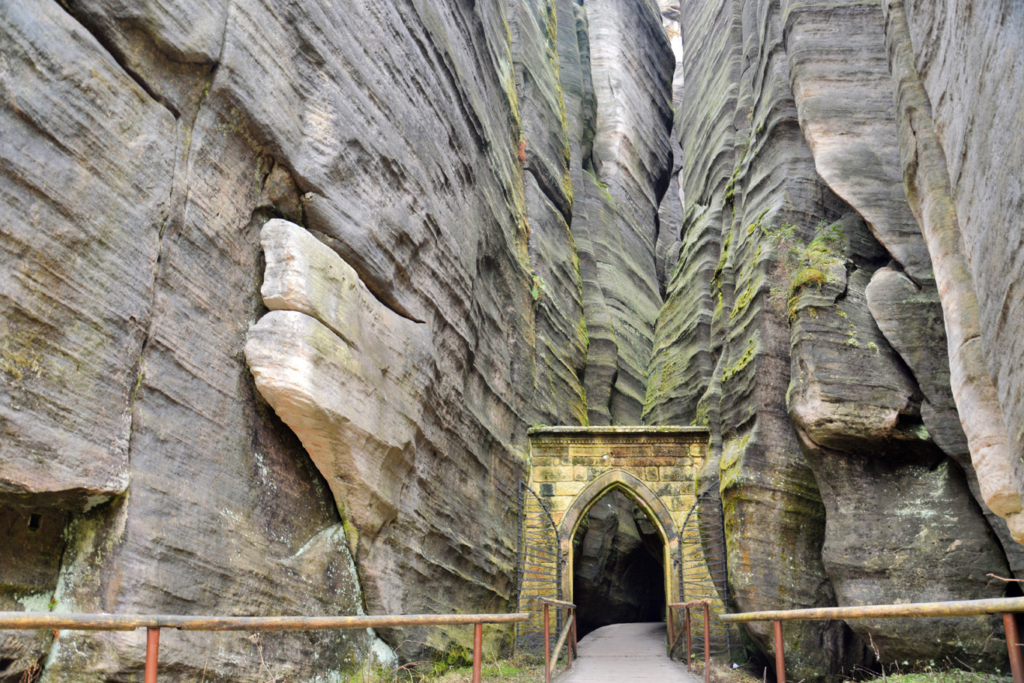
The Adršpach-Teplice Rocks, situated in northeastern Bohemia, are a unique natural formation of towering sandstone pillars and narrow gorges. This breathtaking labyrinth of rock formations offers excellent opportunities for hiking, climbing, and exploring hidden caves. The picturesque lake within the park adds to the area’s enchanting atmosphere.
7. Třeboň Ponds

The Třeboň Ponds, located in South Bohemia, form one of the largest artificial lake systems in Central Europe. Created in the Middle Ages for fish farming, these ponds are now a haven for birdwatchers, fishermen, and nature enthusiasts. The surrounding Třeboň Basin is a UNESCO Biosphere Reserve, offering scenic cycling routes, peaceful walks, and opportunities to sample delicious freshwater fish dishes.
8. Konopiště Castle

Konopiště Castle, located near the town of Benešov, is a splendid example of a medieval fortress transformed into a luxurious aristocratic residence. Once the home of Archduke Franz Ferdinand of Austria, the castle features an impressive collection of hunting trophies, medieval weapons, and opulent furnishings. The extensive park surrounding the castle includes a beautiful rose garden and picturesque lakes.
9. Moravian Karst

The Moravian Karst, located near the city of Brno, is a stunning limestone region featuring over 1,100 caves and gorges. The most famous cave, the Punkva Cave, offers guided tours that include an underground boat ride along the Punkva River. Visitors can also marvel at the Macocha Abyss, a dramatic sinkhole over 138 meters deep, offering breathtaking views from its observation platforms.
10. Křivoklát Castle
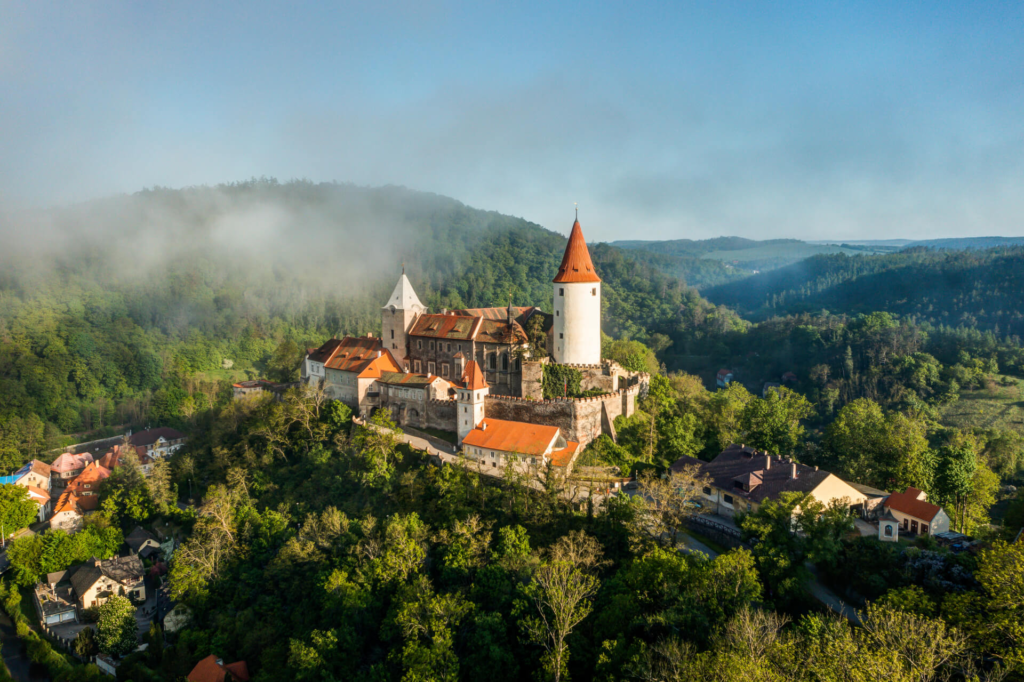
Křivoklát Castle, nestled in the dense forests of Central Bohemia, is one of the oldest and most important castles in the Czech Republic. Dating back to the 12th century, the castle has served as a royal residence, hunting lodge, and prison. Today, visitors can explore its well-preserved interiors, including the impressive Great Hall, the Gothic chapel, and the castle’s extensive library. The surrounding Křivoklátsko Protected Landscape Area offers beautiful hiking and biking trails.
Czech Beer Culture
The Czech Republic is renowned for its beer culture, boasting the highest beer consumption per capita in the world. Brewing traditions in the country date back over a thousand years, and Czech beer is celebrated for its quality, variety, and unique brewing methods.
One of the most famous Czech beers is Pilsner, a pale lager that originated in the city of Plzeň in 1842. Pilsner Urquell, the original Pilsner beer, is still brewed today using traditional methods and is known for its crisp, refreshing taste. Visitors to Plzeň can tour the Pilsner Urquell Brewery to learn about the brewing process and sample this iconic beer.
Another notable beer is Budweiser Budvar, brewed in the city of České Budějovice. Often referred to as the “original Budweiser,” this beer has a rich, malty flavor and a storied history. The brewery offers guided tours that delve into the history and craftsmanship behind this beloved beer.
In addition to these famous brands, the Czech Republic is home to countless microbreweries and beer festivals. The city of Prague itself boasts numerous beer gardens, pubs, and breweries where visitors can enjoy a pint of locally brewed beer while soaking in the lively atmosphere.
Charming Towns and Villages
Beyond the bustling streets of Prague, the Czech Republic is dotted with charming towns and villages that offer a glimpse into the country’s rich history and traditional way of life. One such town is Český Krumlov, a UNESCO World Heritage site known for its well-preserved medieval architecture. The town’s picturesque streets, dominated by a stunning castle, transport visitors back in time and provide a romantic setting for exploration.
Kutná Hora, another UNESCO-listed town, is famous for its Gothic architecture and the eerie Sedlec Ossuary, also known as the Bone Church. This small chapel is adorned with the bones of thousands of people, creating a macabre yet fascinating sight. The town’s historic silver mines also played a crucial role in the Czech Republic’s medieval economy.
Telč, with its colorful Renaissance houses and charming town square, is a hidden gem in the Vysočina region. The town’s well-preserved architecture and tranquil ambiance make it a perfect destination for those seeking a quieter, more relaxed experience.
Natural Beauty and Outdoor Activities
The Czech Republic’s diverse landscapes offer ample opportunities for outdoor enthusiasts to explore and enjoy nature. The Bohemian Switzerland National Park, located in the northwestern part of the country, is a stunning region of sandstone cliffs, deep gorges, and dense forests. The park is a haven for hikers, climbers, and nature lovers, with numerous trails and viewpoints offering breathtaking vistas.
The Šumava National Park, situated along the border with Germany, is another natural paradise. This vast area of forests, peat bogs, and glacial lakes is home to a rich variety of flora and fauna. Visitors can explore the park’s extensive network of hiking and cycling trails or take a leisurely boat ride on one of its serene lakes.
For those seeking adventure, the Czech Republic offers excellent opportunities for rock climbing. The Adršpach-Teplice Rocks, located in the northeastern part of the country, are a popular destination for climbers. These unique sandstone formations, with their towering spires and narrow crevices, provide a challenging and exhilarating climbing experience.
Cultural Festivals and Traditions
The Czech Republic is a country steeped in traditions and cultural celebrations. Throughout the year, numerous festivals and events take place, showcasing the country’s rich heritage and vibrant spirit.
One of the most famous Czech festivals is the Prague Spring International Music Festival, held annually in May and June. This prestigious event attracts world-renowned musicians and orchestras, offering a diverse program of classical music, opera, and jazz performances. The festival’s concerts are held in various historic venues across Prague, adding to the enchanting atmosphere.
The Karlovy Vary International Film Festival, held in the spa town of Karlovy Vary, is another highlight of the Czech cultural calendar. Established in 1946, it is one of the oldest film festivals in the world and attracts filmmakers, actors, and cinephiles from around the globe. The festival showcases a wide range of films, from mainstream to independent and experimental, and provides a platform for emerging talents.
Traditional Czech folk festivals, such as the Slovácký Rok in Kyjov and the Wallachian Kingdom Festival in Vsetín, offer a glimpse into the country’s rural traditions and customs. These festivals feature folk music, dance, crafts, and traditional costumes, creating a vibrant and festive atmosphere that celebrates Czech culture and heritage.
Cuisine
Czech cuisine is hearty and flavorful, reflecting the country’s agricultural roots and historical influences. Traditional Czech dishes are often based on meat, potatoes, and root vegetables, with rich sauces and seasonings adding depth to the flavors.
One of the most iconic Czech dishes is svíčková, a marinated beef sirloin served with a creamy sauce made from root vegetables, cream, and spices. It is typically accompanied by bread dumplings and cranberry sauce. Another beloved dish is goulash, a hearty stew made with beef, onions, paprika, and other spices, often served with dumplings or bread.
Czech cuisine also features a variety of delicious pastries and desserts. Trdelník, a sweet pastry made from rolled dough, is a popular treat found at markets and festivals. The dough is wrapped around a stick, grilled, and coated with sugar and cinnamon, creating a crispy and sweet delight.
Beer is an integral part of Czech dining culture, and many traditional Czech dishes are perfectly paired with a glass of local beer. Whether enjoying a hearty meal in a cozy pub or sampling street food at a festival, Czech cuisine offers a delightful culinary experience.
Top Eight Most Famous Food
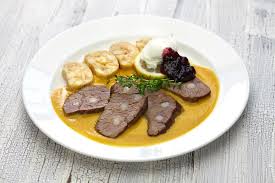

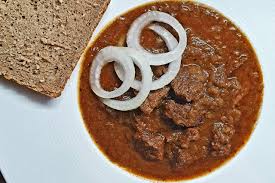





Modern Innovations and Achievements
While the Czech Republic is deeply rooted in its history and traditions, it is also a country of modern innovations and achievements. The nation’s contributions to science, technology, and the arts have made a significant impact on the global stage.
The Czech Republic is known for its strong engineering and manufacturing industries. The city of Mladá Boleslav
is home to the Škoda Auto plant, one of the oldest and largest car manufacturers in Europe. Škoda cars are renowned for their quality and innovation, and the brand has a strong presence in the international automotive market.
In the field of science and technology, the Czech Republic has made notable advancements. The country is a leader in nanotechnology research and development, with institutions such as the Czech Academy of Sciences and the Technical University of Liberec at the forefront of cutting-edge research. Czech scientists have made significant contributions to fields such as material science, biomedicine, and environmental sustainability.
The arts also thrive in the Czech Republic, with a rich tradition of literature, music, and theater. Czech writers such as Franz Kafka and Milan Kundera have left an indelible mark on world literature, while composers like Antonín Dvořák and Bedřich Smetana have made lasting contributions to classical music. The country’s vibrant theater scene, with its numerous theaters and performance spaces, continues to nurture creativity and artistic expression.
Conclusion
The Czech Republic is a land of captivating beauty, rich history, and vibrant culture. From the enchanting streets of Prague to the picturesque towns and natural landscapes, the country offers a wealth of experiences for travelers and explorers. Its brewing traditions, cultural festivals, and culinary delights add to the charm, creating a destination that is both timeless and dynamic. Whether delving into its medieval past, savoring its world-famous beer, or embracing its modern innovations, the Czech Republic is a country that leaves a lasting impression on all who visit.
let’s enjoy few years on earth with peace and happiness….✍🏼🙏

